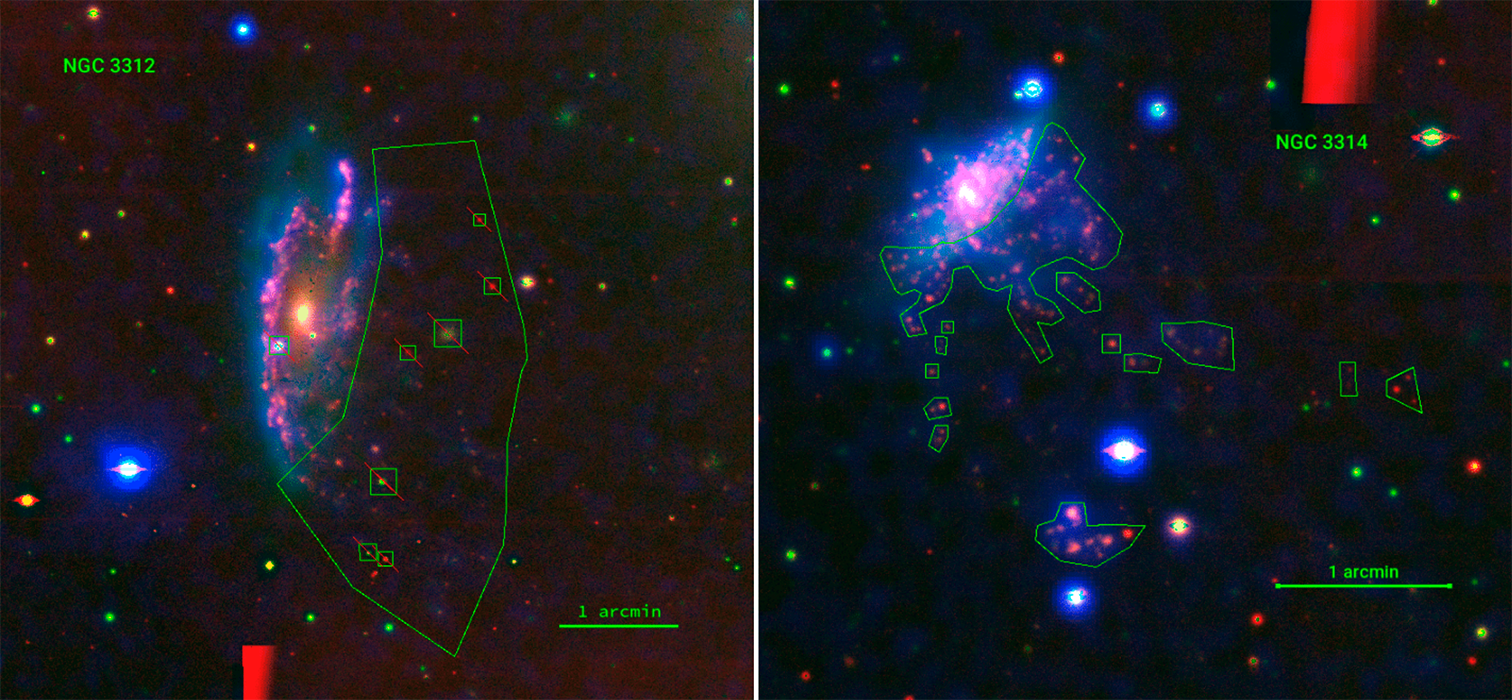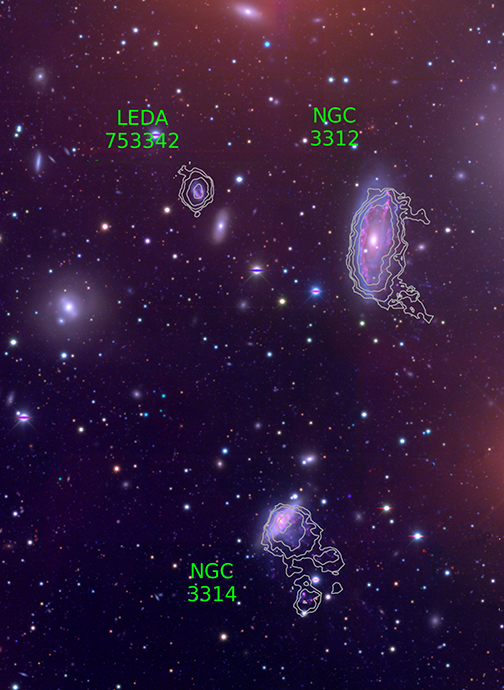Unexpected tails of gas and stars seen in two Hydra Cluster galaxies
The IAA-CSIC leads the study of NGC 3312 and NGC3314a, two galaxies in advanced interaction with the cluster that should have lost most of their gas. The work, which seeks to understand how the environment affects galaxies within a cluster, reveals tidal tails with an anomalous amount of cold gas where stars are even forming
Galaxy clusters are groups of hundreds or thousands of gravitationally bound galaxies that move within it and interact with the hot gas that forms the intercluster medium. This interaction produces changes in their shape and composition, the most notorious being the loss of galaxies' gas, the cold hydrogen from which stars are formed. Now, a study led by the IAA-CSIC has discovered, in the trailing tails of two galaxies located in the central region of the Hydra cluster, an abundance of cold gas and forming stars, something anomalous since it is expected that the gas is lost from the motion of the galaxies towards the centre of the cluster.
"This discovery may shift our understanding of the field because the results suggest that some galaxies may be able to retain their gas for longer than others, but we still don't know why", says Kelley Hess, a researcher at the Institute de Astrophysics of Andalusia (IAA-CSIC) that heads the article.
Galaxies moving through the intracluster medium create, much like a boat moving through water, a "bow shock" in the direction in which they move, leaving behind a trail of eroded material. "This distorts the gas content of the galaxy and, ultimately, this process can remove all the cold gas", explains Hess (IAA-CSIC).
The Hydra cluster, which contains more than one hundred and fifty bright galaxies, is one of the largest nearby galaxy clusters and displays in its central regions two spiral galaxies, NGC 3312 and NGC 3314a, which are the closest spiral galaxies to the centre of a cluster in which such well-defined large tidal tails have been seen: in fact, the study estimates that the torn-off material that makes up the tails is equivalent to 8% and 35% of the total gas in the discs, and shows that it is still continuing to form stars. Star formation is usually associated with the arms of galaxies, but curiously these tails harbour a remarkable amount of forming stars: stars that will probably live their entire lives inside the cluster, but outside a galaxy.

The formation of galaxy clusters
Galaxies can join a cluster individually or as a group. In the latter case, they may form substructures capable of surviving within the cluster, as has been found in the central region of the Hydra cluster: the drag observed in the tails of NGC 3312 and NGC 3314a reveals that they move towards us as part of a substructure that has already passed its point of closest approach to the cluster centre.
The fact that these galaxies still have a high content of cold gas suggests that either the substructure medium may protect them from the more dramatic effects of ram pressure, or that the galaxies are moving in more tangential orbits than originally assumed.
Overall, the study advances our understanding of how galaxies are affected by the environment in which they live. “I think the idea that galaxies are not just isolated objects that live their lives quietly, but live in dynamic environments, is an amazing thing to think about –concludes Hess (IAA-CSIC) –. The study of galaxy evolution and the role of the environment is often compared to the study of 'nature versus nurture' in psychology. This is a case study of the strong impact that 'nurture' can have on the evolution of a galaxy".

K. M. Hess et al. NGC 3314a/b and NGC 3312: Ram pressure stripping in Hydra I Cluster substructure, Astronomy & Astrophysics, December 2022 https://www.aanda.org/articles/aa/abs/2022/12/aa43412-22/aa43412-22.html
Instituto de Astrofísica de Andalucía (IAA-CSIC)
Unidad de Divulgación y Comunicación
Silbia López de Lacalle - sll[arroba]iaa.es - 958230676
https://www.iaa.csic.es
https://divulgacion.iaa.csic.es

